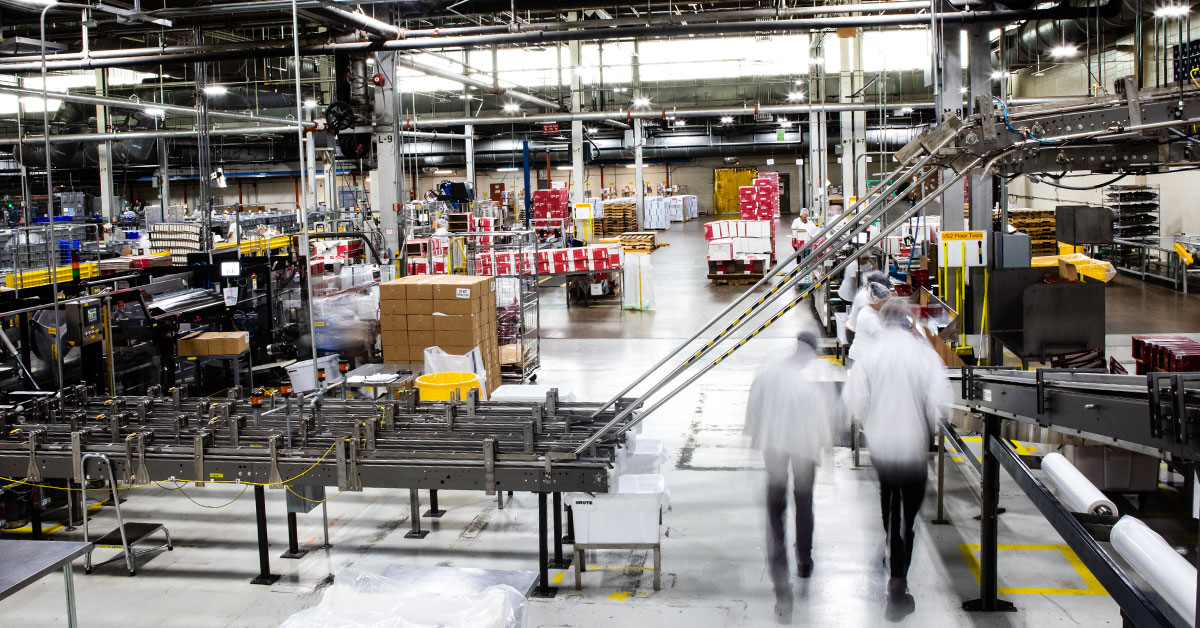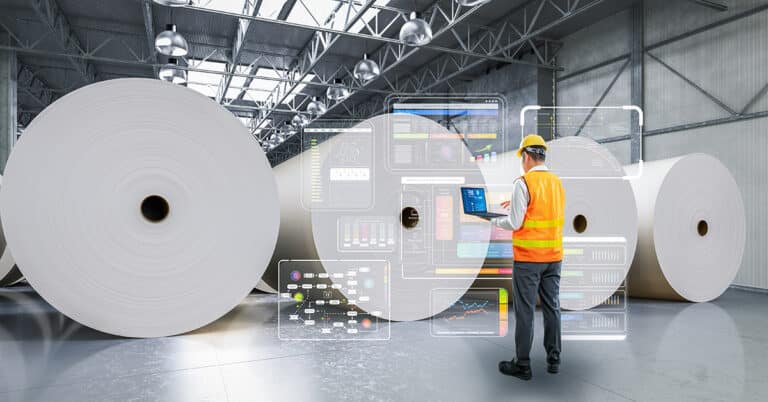A manufacturing organization can be likened to a symphony orchestra, and manufacturing operations management (MOM) is the conductor. Its purpose is to coordinate the contributions of separate groups to satisfy the customer while minimizing the resources needed.
This blog explains the role of MOM in manufacturing. It identifies the groups or functions involved, discusses how digital tools can support MOM and reviews the benefits of a holistic approach.
What is manufacturing operations management (MOM)?
Manufacturing is about converting raw materials into products that customers want. MOM is an all-encompassing approach to coordinating the many functions and teams needed to do that, with the goal of satisfying customer demand as efficiently as possible.
In a business without MOM, manufacturing still happens, but the big picture view is lacking. Individual functions attempt to optimize their activities and resources, but there’s no optimization of the overall system. Inevitably, this creates inefficiencies that increase costs, lower quality and reduce schedule adherence.
Components of manufacturing operations management
MOM coordinates the operations of functions found in every manufacturing organization. These are:
- Production planning and management: Given a list of customer orders and due dates, production planning is the process of determining the sequence in which to release them to the factory. This depends on the work and materials needed, machine capacity and the size of the order. Once orders are released, progress is monitored and adjustments made if problems such as a machine breakdown arise.
- Resource planning: This can involve equipment, materials and even energy, but in many factories labor is the primary resource to consider. Manning levels may need flexing depending on workload and order mix. Labor resource planning also involves looking at skills required, both now and in the future, and developing plans to ensure the workforce will be up to future challenges.
- Manufacturing engineering: This function is responsible for providing tooling and machinery for future production requirements. It also gets involved with troubleshooting problems and supporting quality and continuous improvement efforts.
- Quality management: The Quality Management System defines the policies and procedures in place to prevent defects. Audits measure conformance, with corrective actions being applied as needed. Quality management includes quality control activities such as inspection used to detect nonconforming product before shipping.
- Maintenance management: Machine availability is key to meeting delivery dates and achieving high levels of utilization. Planned maintenance is integrated with production planning to ensure equipment is available for inspection and servicing when needed. Manufacturing engineering may be involved when assets need replacing.
- Inventory management: Raw materials and subassemblies must be available when required to meet the production plan. Inventory management monitors levels, implements rotation policies such as FIFO (First in, First Out) and initiates replenishment requests.
- Logistics management: This function handles transportation and delivery of finished product, which may go to a warehouse or distribution centers, along with inbound shipments of materials.
Benefits of implementing MOM
Leaders of functions covered by MOM focus on maximizing efficiency within the areas for which they are responsible. MOM ensures this is not done at the expense of less efficiency elsewhere. For example, if the maintenance team were to reduce spares inventory, this might lead to longer periods of unplanned machine downtime.
The major benefits of taking this holistic approach to manufacturing operations are:
- Increased production efficiency: By considering the overall goals of the organization, MOM helps reduce unplanned downtime while simultaneously maximizing asset and resource utilization.
- Improved quality: Effective materials management avoids the need to switch suppliers at short notice and ensures appropriate stock rotation. Standard operating procedures are followed and equipment is maintained to a level where it consistently performs as needed.
- Enhanced decision making driven by data: Coordination of the various systems generates production reporting data, which guides the provision of support services. This data-driven manufacturing increases visibility into day-to-day activities, which facilitates better decision making.
- Better communication: MOM acts as a kind of umbrella, pulling functions together and promoting faster and more frequent communication as everyone works toward common goals.
- Reduced operational costs: Optimizing the production system cuts waste in material and resource utilization. Improved coordination increases the speed with which information is shared and with which decisions are made. The result is lower unit production costs.
- Consistent tracking and compliance: Improved data collection, greater visibility into operations and better coordination mean an enhanced ability to monitor order progress and other production-related activities and detect and correct non-compliant work.
Manufacturing operations management technology
The functions within MOM grew up separately and often have their own systems for managing activities and optimizing key metrics. Today a manufacturing operations management solutions approach provides a higher level of coordination, supporting greater collaboration and increased efficiency.
Software and technologies falling under this broader scope of MOM are:
- MES: The Manufacturing Execution System (MES) tracks what’s happening on the plant floor in real time. This provides visibility into the status of individual orders, plus work-in-progress tracking, machine availability reporting and quality performance.
- APS: Advanced Planning and Scheduling systems take a longer term look at the capacity and capabilities that will be needed in the future to meet anticipated demand for current and future products.
- ERP software: Often the backbone of the business, ERP software coordinates production planning and control with purchasing, logistics, finance and other functions. It provides a single source of data that enables visibility and control while ensuring accuracy.
- CMMS: Managing costs while achieving high levels of machine availability requires an effective and proactive maintenance function. The Computerized Maintenance Management System (CMMS) manages planned maintenance activities, issuing work orders, logging details of work done and tracking spare parts inventories.
- Machine health monitoring systems: As manufacturers strive for higher levels of maintenance efficiency, machine health monitoring systems will play an increasingly central role. By enabling predictive maintenance, these will reduce planned and unplanned downtime while improving maintenance productivity.
Asset care at the heart of MOM
Satisfying customer orders while managing costs requires coordination between the multiple functions under the manufacturing operations management umbrella. The goal is to ensure a system-wide level of optimization, rather than local optimization of individual functions.
Maintenance has a critical role to play in maximizing resource utilization, efficiency and productivity. As leaders in outsourced industrial maintenance, ATS helps businesses reduce downtime and become more successful. Contact us to learn more.






